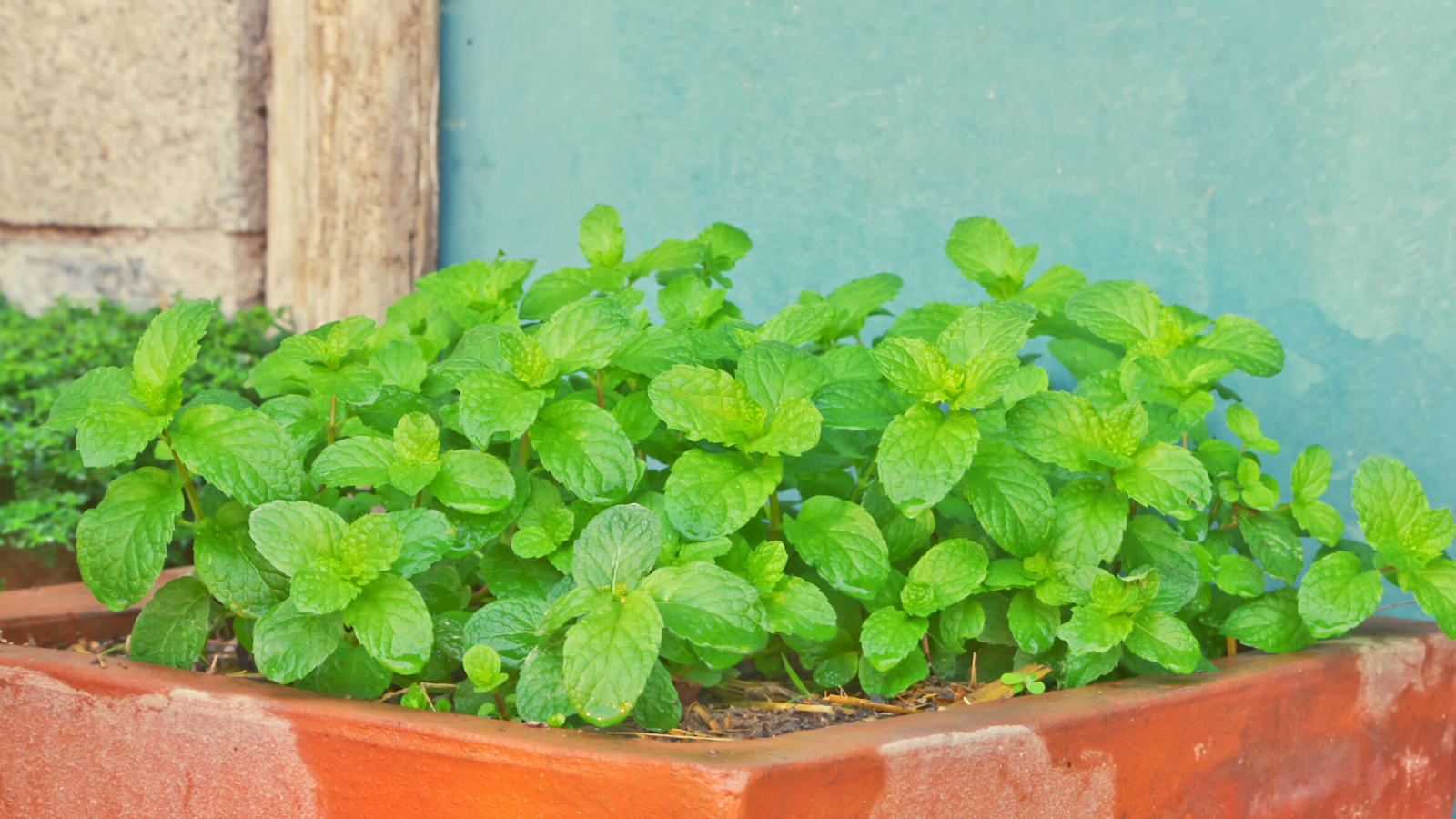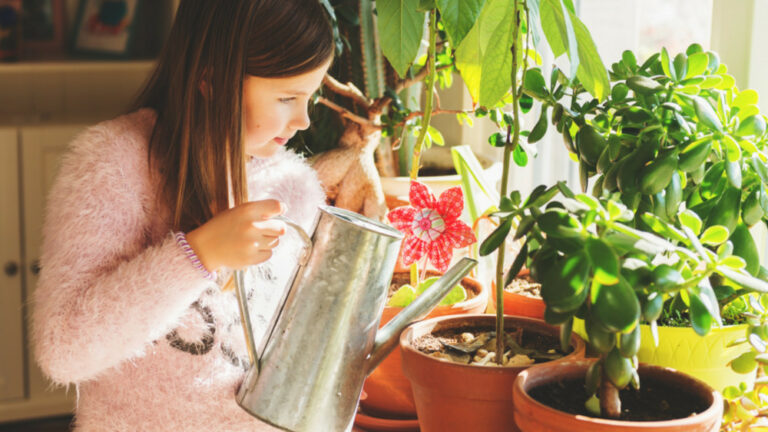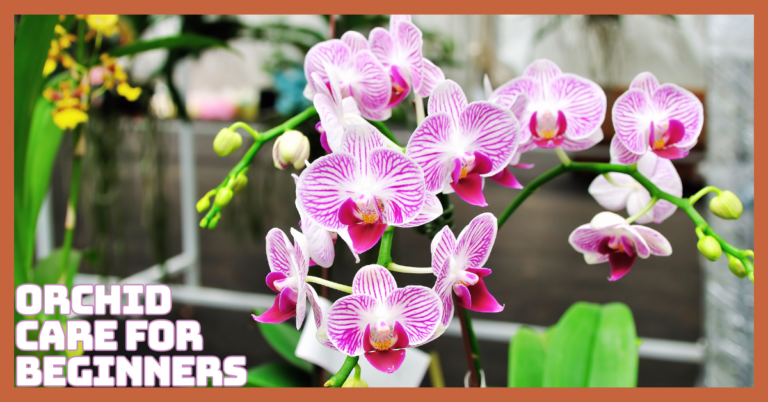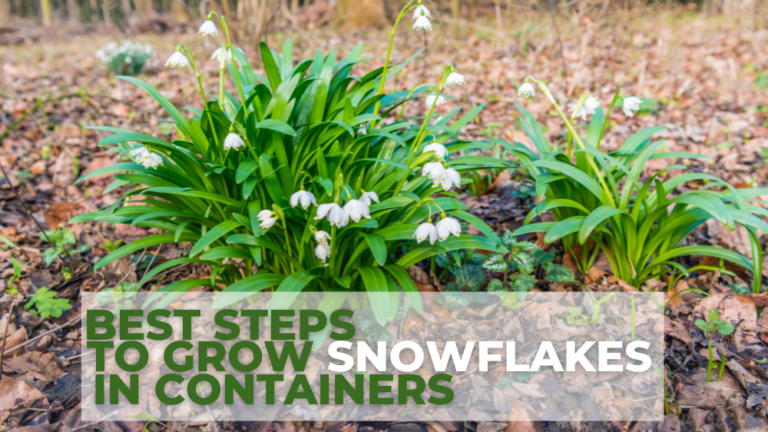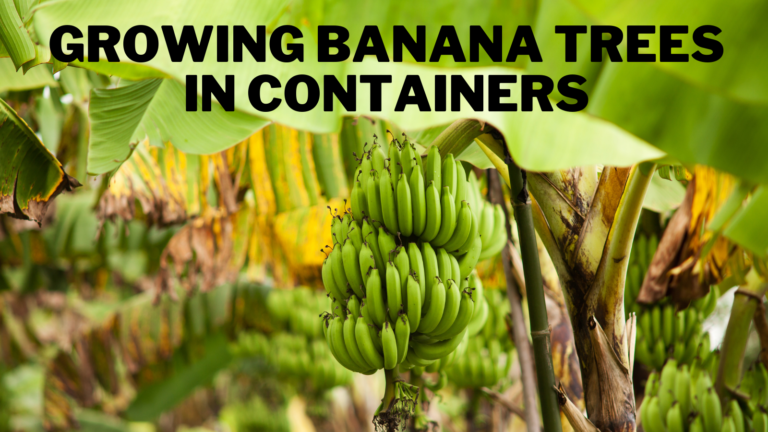Easy Steps Of Growing Mint In A Container
Easy Steps Of Growing Mint In A Container
Mint is a beautiful and beneficial herb, and the scent is out of this world. Unfortunately, it isn't always well behaved, and when cultivated in the garden, this charming little plant may be a bully. If you're worried about the demanding character of this lively plant or just don't have enough room for a herb garden, mint container planting is an alternative. Place potted mint plants on your front porch so you can cut the leaves as required or grow mint indoors in pots. I hope the steps will help you of growing mint in a container.
History Of Mint
Mentha belongs to the Mentheae tribe of the Nepetoideae subfamily. There are around 65 genera in the tribe, and their relationships are unknown. The circumscription of Mentha has been a point of contention among authors. M. cervina, for example, has been assigned to Pulegium and Preslia, while M. cunninghamii has been assigned to Micromeria.
Both M. cervina and M. cunninghamii should be included in Mentha, according to a molecular phylogenetic research published in 2004. In a 2007 treatment of the genus, M. cunninghamii was eliminated.
Mint (genus Mentha) is a genus of 25 aromatic herbs belonging to the mint family (Lamiaceae). Mints are native to Eurasia, North America, southern Africa, and Australia, but they are extensively spread and have naturalized throughout the temperate world.
Several species, especially peppermint and spearmint, are used as flavourings in foods (such as candies and gum), as well as liqueur and dentifrices. Mint essential oils are used in perfumery as fragrances. Herbal medicine commonly uses some species.
Mints are aromatic herbs that are almost exclusively perennial. They have upright, square, branching stems with wide-spreading underground and overground stolons. The leaves are grouped in opposite pairs and range in size from oblong to lanceolate, with a serrated border and often downy texture.
The colors of the leaves range from dark green and gray-green to purple, blue, and occasionally pastel yellow. Flowers range from white to purple and are produced in false whorls known as verticillasters. The corolla has two lips and four subequal lobes, with the upper lobe being the most prominent. The fruit is a nutlet with one to four seeds within.
Different Types of Mint
Mint is one of the most easily recognized smells, appearing in various candies and festive delicacies. Most people are familiar with spearmint and peppermint, but did you know that hundreds of different species of mint plants thrive in herb gardens?
Mint comes in various flavours, including chocolate and apple mint – excellent! Consider how you'll use your mint plants while choosing which varieties to grow. Some types of mint are better for culinary use, while others are better for medical use.
In this article, we'll look at some of the most popular mint kinds to plant in your herb garden and how to grow and use them. The results will astound you. Before growing mint in a container, you should choose a suitable variety for your location.
1. Peppermint Mint
This common form of mint is a hybrid of watermint and spearmint, with dark green leaves serrated at the edges and feel fuzzy. Peppermint thrives best in USDA hardiness zones 5 through 9.
2. Spearmint Mint
The name “spearmint” relates to the sweet-tasting type's pointy leaf tips, used as a garnish and flavouring in teas. USDA hardiness zones 5–9 are ideal for growing this culinary herb.
3. Apple Mint
This mint variety features oblong, roughly oval-shaped leaves with serrated edges and hairy tops and is also known as woolly mint or pineapple mint. It has a delicious flavour, and the dried leaves go nicely in fruit-themed potpourri. Apple mint is hardy in USDA zones 5 through 9, with overwintering techniques allowing it to survive in zone 4.
4. Pennyroyal Mint
This mint is poisonous to humans and is frequently used as a pesticide. Pennyroyal mint is a good ground cover plant but keep it away from little children. Pennyroyal blooms purple flowers in the summer and is hardy in USDA zones six through nine.
5. Banana Mint
The aroma of this mint type is similar to banana. It has lilac-colored blossoms and lime green leaves, and it's delicious in desserts like ice cream and fruit salads. Hardiness zones 5 through 11 are ideal for this perennial herb.
6. Chocolate Mint
Chocolate mint, despite its name, has a mostly minty flavour character. Its dark brown stems and leaves, on the other hand, have a cocoa scent. It has lavender blooms that bloom during the summer. Chocolate mint thrives in USDA hardiness zones 5 through 9.
7. Lavender Mint
Tall hedges and vivid blossoms characterize this largely ornamental mint cultivar. It's commonly found in shampoos and topical ointments, but it can also be used as a savory garnish. USDA zones three through seven are suitable for lavender mint.
8. Water Mint
This mint is utilized for its therapeutic qualities and is named after its inclination to thrive near rushing water. It produces blue and purple flowers in the summer, which attract a lot of pollinators. In zones three through ten, watermint can be grown in a water feature or shallow pond.
9. Corsican Mint
Because of its low height and capacity to repel pests, this mint is often used as a bedding or bordering plant. Corsican mint can be used as a ground cover plant in USDA zones 6 through 9.
10. American Wild Mint
This kind, sometimes known as maize mint, is mostly used for medicinal purposes, herbal drinks, and mint jelly. In USDA zones four through ten, it grows best in full sunlight and sandy soil.
11. Cuban Mint
Cuban mint is also known as mojito mint since it is the original mint used in mojito cocktails. It has a strong flavour and smell. It grows best in USDA zones 5–9 and can reach two feet in the correct conditions.
12. Orange Mint
The intense citrus aroma and flavour of this kind make it popular for mixed beverages and iced tea. It's a fundamental ingredient in Chartreuse liquor. It is commonly used in perfumes and is sometimes known as bergamot mint. Grow orange mint in full sun in USDA zones four through eleven for best results.
13. Calamint Mint
Calamint is mainly grown in the United Kingdom and has high menthol content. It grows best in hardiness zones 5–7 in the United States.
14. Horsemint Mint
This species can reach four feet and is utilized for various medicinal applications. Its lemon flavour compliments seafood and poultry. Horsemint should be grown in a sunny region in USDA zones four through nine for the best results.
15. Ginger Mint
The brilliantly green leaves of this plant are sometimes used in soups, meat dishes, and Vietnamese cuisine. USDA zones 5 through 9 are the best for growing it.
16. Cat Mint
Catnip, commonly known as catmint, is a member of the Mint family with many of the same characteristics as other Mint varieties. It contains the active chemical ‘nepetalactone,' a plant terpenoid that affects both cats and humans' central nervous systems.
For its merits as a companion plant, it is typically planted in tea gardens or combined with other plants. Catnip repels several insects, particularly flea beetles. Height ranges from 3 to 4 feet, with some individuals reaching 5 feet.
17. Egyptian Mint
Egyptian Mint contains a fruity secondary flavour similar to Apple Mint, as well as the signature menthol/mint flavour in a more modest concentration. The plant is tough, with an open, upright growth habit that allows for plenty of airflow. In comparison to most other mint kinds, the long pointed leaves are also quite huge. They're green and have silky hair that looks like peach fuzz.
In mid-summer, lavender to violet flowers bloom on the stem ends. Zones 5 through 11 of the USDA It's best grown as an annual in zones 3 to 6, or potted and brought indoors for the winter.
18. Habek Mint
Bible Mint (Habek Mint) is a Middle Eastern plant that some belief is the mint plant mentioned in various Biblical scriptures. Longifolia [Mentha longifolia] is its Latin name, its long, thin foliage. Habek mint leaves are long and slender, unlike most other mint leaves, and they are slightly fuzzy, like a peach. Zones 5 through 11 of the USDA. It can be planted as an annual or potted and brought inside during the winter in zones 3 to 6. Height at maturity: 1½ to 2 feet.
19. Morroccan Mint
Moroccan mint includes a high concentration of natural sugars, which, when combined with its minty essential oils, makes for a delicious tea, as well as mint preserves and confections.
It is quite hardy and will thrive in various soil types as long as they are adequately watered; nevertheless, it is not drought tolerant. Although it may be grown in regular gardens, many gardeners prefer to keep it potted, where it thrives. It's also a good choice for bee and butterfly gardens because it attracts these vital pollinators.
20. Pineapple Mint
Teas, drinks, and confections all contain this ingredient. I've made pineapple mint jelly with it before. It will offer its own particular flavour to any recipe that calls for mint.
Pineapple mint features creamy white edges on ruffled multicoloured foliage. When brushed against, the leaves release a mild pineapple aroma, and the flavour is minty pineapple. The plants grow up to 2 feet tall.
It has a strong scent and, like most mints, attracts pollinators. The off-white blooms that develop on spikes atop the plant in mid-summer are tinged with pink.
Ways To Grow Mint In Container
Mint is a tricky, aggressive herb that can soon outgrow its control in a garden. Instead, try growing mint in a container to keep it contained. Most types of mint grow well in containers, producing luxuriant leaves that can be used in recipes or simply enjoyed for their fragrance.
Mint can also be grown inside in a container near a light window. Alternatively, keep a pot on your patio near your kitchen for convenient access when cooking. Because seeds can be finicky, most gardeners start their mint from cuttings or nursery plants.
Choose A Container
To accommodate the plant's robust root structure, mint pots should be 8-10 inches in diameter and 12 inches deep. Mint may grow 18 inches tall and spread quickly, so if you have a huge pot or a 10-gallon grow bag, go for it!
Mint containers should be made of any material and should have drainage holes. Remember that unglazed clay pots, such as terracotta, will dry out faster than glazed or plastic pots.
Soil For Container Mint
Mint grows best in damp, fertile soil with a pH of 6.0 to 7.0. Cover the soil with a thin layer of mulch to keep it moist. Mint does not grow well in deep soil. Mint should be grown in containers at least 12 inches deep to provide the plant with adequate room to flourish. While ordinary potting soil for mint plants usually provides healthy growth, a soilless peat-based potting combination with perlite or vermiculite allows for enough drainage while still maintaining just enough moisture for excellent growth.
Sowing Mint Seeds
Mint spreads quickly, so just one mint plant per 10-inch container is required. Seedlings and transplants should be planted at the same depth as they were in their prior container.
Seeds should be sown ¼ inch deep. To ensure germination, sow two to three seeds in each container, then trim away the surplus plants as they grow. Maintain a wet soil and temperatures near 70 degrees Fahrenheit until the mint seeds germinate, which takes seven to ten days.
Sunlight For Container Mint
Place the pot where it will receive six hours of direct sunshine on most days. If you reside in a hot area, try to provide some shade from the scorching afternoon heat. Rotate the container as needed to ensure that the plant develops evenly and not in one direction toward the sunshine.
Watering Requirements
In the spring and summer, mint in pots should be watered once every three days. Increase your watering if your mint begins to wilt or the top 1 inch of the potting soil begins to dry out instead of remaining evenly moist. In large pots with moisture-retaining potting soil, give mint a good soak.
You might be wondering how often you should water mint plant pots once you've planted the roots. Because a mint plant requires a lot of water, you should water it once or twice a day.
Mint may thrive in a wide range of soils and lighting conditions, although it does require consistently moist but not saturated soil with appropriate drainage. Mint plants typically require 1 to 2 inches of water.
Pruning
Remove any blossom stalks that emerge, as these will impair the mint's flavour. Pinch back the stems regularly to stimulate bushier growth. Cut the plant down to an inch above the soil level if it becomes lanky or scraggly, and it will regenerate with fuller growth. As the stem tips regenerate, pinch them back.
If the plant spills over the edge of its pot, keep an eye out for mint stems that may take root and spread if they come into contact with your grass or garden soil. To prevent undesired spread, cut them back.
Overwintering
Bring the pot indoors for the winter before the temperatures drop in the fall if you live in a colder area than your mint variety's hardiness zones. It should be near a light window and away from drafts or hot air from heaters. Reduce watering somewhat but do not allow the plant to wilt. Overwintering the container in an unheated garage or shed is another possibility. The plant will go dormant in the winter, but it will most likely regrow in the spring as the weather warms up.
Fertilizing
Fill the pot halfway with good potting soil. If the potting mix does not already have it, add some balanced slow-release fertilizer and follow the package recommendations. Slow-release fertilizer should be applied to the container once a year in the spring.
Plant your mint at the same depth as in the nursery pot. If you want lots of mint leaves, you'll need to fertilize in addition to watering frequently. Eco-seaweed with eco-aminogro applied every two weeks will generate tasty growth that you can collect and use in the kitchen.
Pests And Disease Of Mint
If the surrounding air is humid or moist, powdery mildew is a typical problem that can impact mint. If this happens, treat it with baking soda spray. Although baking soda is generally regarded harmless for most plants, test it on a small piece of mint before using it on the entire plant.
Harvesting Mint
Picking mint plants is not difficult. If you only need a few leaves, you can pluck them individually or prune the plant with shears and then take the leaves from the stalks. Cut the stems 1 inch from the ground just before blossoming. One mint plant can be harvested twice or three times in one growing season.
Alternatively, you can simply select the leaves as needed. During the winter, you can cultivate the plants indoors for fresh leaves. Place the mint in a plastic bag that isn't completely sealed to allow air to flow. Wrap the herbs loosely because the trapped moisture will cause them to mould. Trim the ends and lay them in a glass half-filled with water.
Conclusion
Mint is one of the most straightforward herbs to cultivate and is incredibly versatile since it may be used for cooking, aroma, and even medicine. It's a crucial component in many recipes and fantastic for boosting the flavour of various foods, whether it's chopped into fresh summer salads, added to desserts, or just tossed into the pot with new potatoes. It also adds a pleasant touch to a summer cocktail and is ideal in a mojito for those forthcoming summer events. You can also read my blog post on the 6 Delicious Vegan Recipes Using Mint.
I trust you enjoyed this article on the Easy Steps Of Growing Mint In A Container. Please stay tuned for more blog posts to come shortly. Take care!
JeannetteZ
>>>Please click here to read my all-inclusive article about Container Gardening<<<
Your Opinion Is Important To Me
Thoughts? Ideas? Questions? I would love to hear from you. Please leave me your questions, experience, and remarks about this article on the Easy Steps Of Growing Mint In A Container, in the comments section below. You can also reach me by email at Jeannette@Close-To-Nature.org.
You might also enjoy these blog posts:
Best Tips To Growing Herbs In Containers
Best DIY Natural Beauty Tips For Glowing Skin
Best Persian Cat Health Care Tips
Easy Steps Of Growing Plums In Containers

